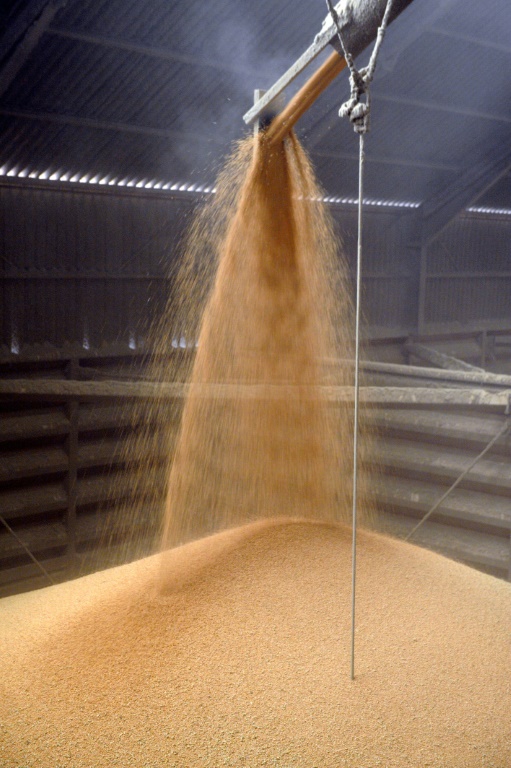A combine harvester harvests a field of wheat near Boulange, in Moselle, on July 25, 2020 (AFP/Archives/JEAN-CHRISTOPHE VERHAEGEN)
Heat is also the enemy of cereals: the harvest season is over, the cooperatives fill their silos by monitoring the temperature, a perilous exercise in the face of global warming.
In front of the entrance to the silo of EMC2, the first cereal cooperative in Lorraine, a truck full of freshly harvested grain is waiting to be weighed. A sample is taken there: it makes it possible to evaluate the quality of the goods or even its moisture content.
“These analyzes make it possible to position the goods”, explains David Meder, field director of EMC2 in Bras-sur-Meuse (Meuse): here, the silos have a total of 42 cells, with a total capacity of 78,000 tonnes.
Grain is “a living commodity whose quality must be preserved”, underlines Mr. Meder. He continues to breathe and his overheating is the enemy of quality. Even in cold weather, the grain tends, by itself, “to heat up more than to cool down”.
This heating leads to faster degradation. It may be prior to an invasion of insects, a problem that is increasing due to global warming.
– Sudden overheating –
“20 years ago, the first white frosts arrived in October or November” in the Meuse, explains Franck Gatelier, silo manager. “We have known cells at 5 degrees”.

This image taken by drone shows grain silos on the banks of the Moselle, in the port of Metz, on August 25, 2022 (AFP/Archives/JEAN-CHRISTOPHE VERHAEGEN)
But the evolution of the climate, “we perceive it in our ability to reduce the temperature of the grains”, he assures. From now on, cooling is done in stages: 25 degrees, then 15 degrees. Last year, harvests were able to drop to 10 degrees.
Warm-ups sometimes happen without warning. A pile of grain can “stand still for two months” and suddenly heat up. In the same pile, the top and the bottom can be at the right temperature, but a heating point can be located in the middle, notes Mr. Meder.
The challenge is continuous for the cooperatives: “We receive cereals throughout the year”, observes Mr. Meder, although the influx is greater at harvest time. Storage extends over 11 months, until the next harvest. “The harvest is done once a year, but we eat every day!”
– Energy –
Some farmers with storage facilities on their farms have been looking for solutions several years ago to fight against this scourge which can quickly contaminate all production.
EMC2 offered them a thermometer to be inserted into the grain and permanently connected: this remote monitoring device makes it possible to know if hot spots are forming in such and such a place, and thus to implement conventional means of cooling, such as ventilation.
In the cooperative’s silos, long cables are visible: these are thermal probes adapted to the colossal volume of storage.

A grain silo is filled with freshly harvested wheat on August 10, 2013 in Saint-Germain-D’Arcé, in Sarthe (AFP/Archives/JEAN-FRANCOIS MONIER)
A little further, in the technical and piloting room, a technician consults his computer and the application developed by Javelot, the young creator of this solution: blue, orange or red dots appear and indicate the temperature of the grains .
“We ventilate effectively”, at the right times and in the right places, assures Mr. Meder.
In times of energy inflation, the permanent monitoring of the temperature makes it possible to avoid costs linked to unnecessary ventilation.
According to Javelot, the energy consumption linked to intelligent ventilation is reduced by “20 to 40%”.
In addition to the need to preserve grain quality, maintenance of silo ventilation is a mandatory safety standard. In 1997, the explosion of grain silos caused the death of 11 people in Blaye (Gironde).
© 2023 AFP
Did you like this article ? Share it with your friends with the buttons below.




